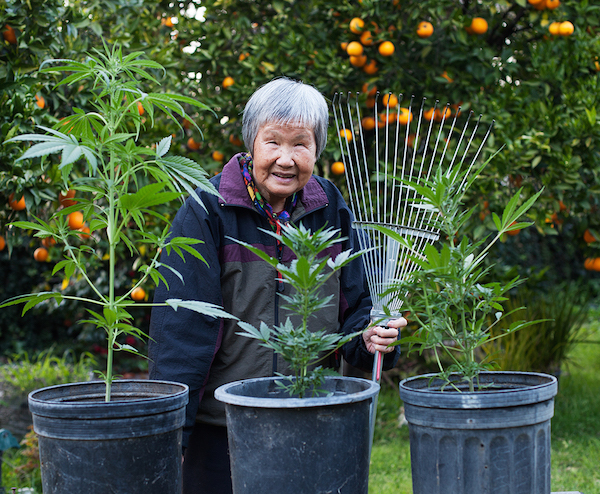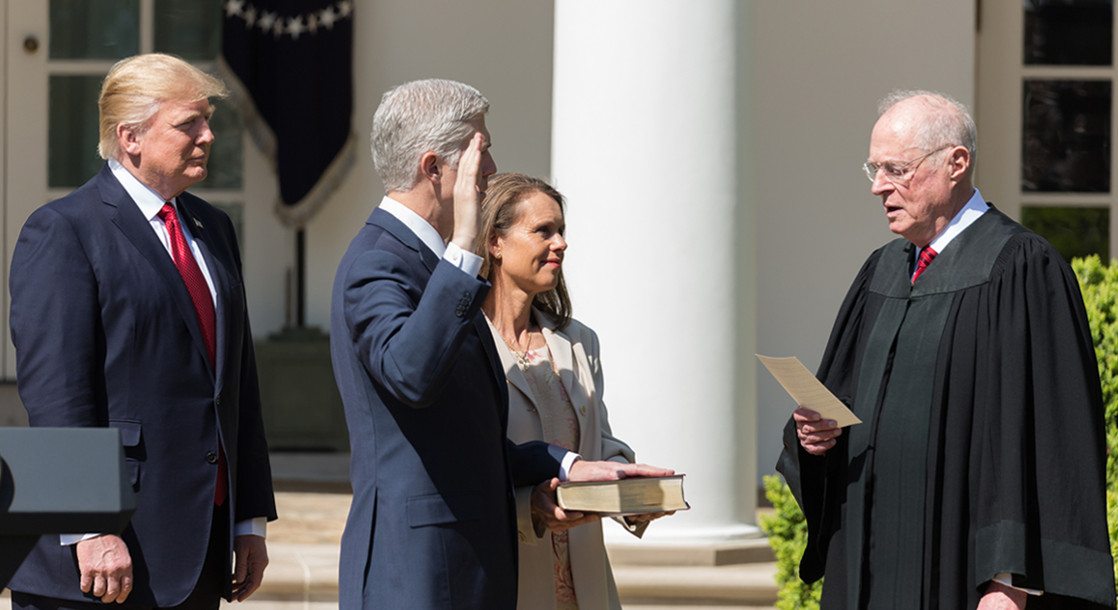All photos courtesy of Ophelia Chong and Stock Pot Images
When people think “marijuana entrepreneur,” they probably aren’t imagining an Asian-American. Ophelia Chong (no relation to Tommy), the founder of Stock Pot Images, intends to change that through her company, her advocacy, and her activism. She was born Chinese-Canadian, but today she’s a US citizen. Over the last two years, Stock Pot Images has become the go-to source for cannabis photos — the Shutterstock of weed, if you will.
Stock Pot Images archives some of the typical photos one would expect to find at a weed site: nug porn, folks blowing plumes of thick smoke, and cannabis-themed events. But there’s a lot more to it than just pot. Chong’s curated the site to include people of all colors, shapes, and sizes, genders, sexualities, and ages. She’s even ramping up the site’s stockpile of household pets, as cats and dogs become a new customer base for therapeutic cannabis products.
Chong hasn’t just locked down a massive archive of weed photos, either. She’s also encouraging people of color to dive head-first into a new, flourishing industry. One of her projects is the website Asian-Americans for Cannabis Education (disclaimer: I’ve been featured on the site), which highlights the contributions of one of the least represented and least recognized demographics in the cannabis industry. Another project she spearheads alongside fellow advocate Edward Chien is the Munchies Festival, which combines non-infused cuisines from around the world with cannabis-laced dishes.
MERRY JANE spoke with Chong over the phone as she drove from Los Angeles to San Francisco to help prevent a dispensary — one of the few co-owned by Asian-Americans — from losing its license. We started off chatting about her stock image company, and inevitably ended up discussing diversity (or lack thereof) in the American cannabis industry.

Photo by Josh Fogel, courtesy of Stock Pot Images
MERRY JANE: How’d you come up with the idea for Stock Pot Images?
Ophelia Chong: It started on January 8, 2015. A close family member was trying cannabis for medical reasons. As I was watching her, I thought, “She’s not a stoner.” Then I walked over to my computer, and I looked at the images when I searched for ‘cannabis.’ And they were stereotypical images. It opened my eyes to how, as a minority, I felt that, “OK, here’s another stereotype.”
From there, I decided to start Stock Pot Images. In a few weeks, I got my trademark and my LLC. There was no one out there doing this. I launched on 4/20 in 2015, with about 2,300 images and three photographers. Now, I’ve got over 300 photographers and over 17,000 images. I’ve partnered with Adobe, and I have two other partners involved in intellectual property.
How is Stock Pot Images different from the other stock image sites with pot pics?
I protect all my people. They’re my family. It’s their work, it’s their income. Other companies offer cannabis photography, but they don’t protect the work. With my people, I don’t allow that to happen. If someone tries to screenshot the work, it appears black. Everything has a digital watermark.
It’s just about education. I don’t go into someone’s store and take something and say, “I’ll just give you credit later.” A lot of people don’t see digital images as property. There’s an entire generation raised on peer-to-peer sharing and not paying for digital works. We’re now dealing with that, 20 years after Napster, and we’re having to educate people that just because something’s online doesn’t mean you can take it.

Photo by David Michaels, courtesy of Stock Pot Images
How’s Stock Pot Images doing now?
I started the business before there was a really big need for it. If I started it now, I’d be fairly behind the curve because a lot of people are realizing the potential of it. Because I started it over two years ago, I now have some legacy in this.
I understand some of our photographers are taking a risk by shooting cannabis. I appreciate their hard work, and their dedication to activism. Because of that, they get 50 percent of all commissions, which is one the highest in the industry. It’s not the highest — some offer as much as 60 percent — but I make sure the photographers are getting a good price for their work, because 60 percent for a $2 photo isn’t really much of a commission.
Which images do businesses request the most?
There’s two kinds of clients: there’s the mainstream client, and there’s the cannabis client. The cannabis client knows what they want, such as an image of a certain strain. We have the largest collection of strains in the world in our [image] library. We have over 2,000 existing strains, some you’ve probably never heard of, other strains are in the top ten. Cannabis clients license a lot of those.
The mainstream clients love images of people standing while holding a pot leaf. They love that. Another type of image, too, which I pushed to Adobe, are pets. We’re licensing a lot of cats and cannabis images because the pet industry is huge. We [work with everyone] from science companies, to medical startups, to dispensaries. We’re coming out soon with a calendar with Brown Trout that’s curated by Jorge Cervantes.

Photo by Seagrass Photography, courtesy of Stock Pot Images
How are you reaching out to new clients?
In my two and half years with Stock Pot, I’ve gone to a lot of conventions and made a really large network. THC Design, which is one the largest cultivators in California, brought me on as a liaison. What I told them, in my experience at Stock Pot, is to not focus on one demographic. It’s not just white people in cannabis. With THC Design and Stock Pot, it’s LGBTQ. It’s seniors. It’s people of color. It’s veterans. People from every walk of life use cannabis. If we only focus on white women, or white men, then we are doing a disservice to the history of cannabis, and not supplying images or cannabis to everybody. There’s not one message for everybody. We have to tailor the message to the entire group. Through THC Design and Stock Pot Images, I’m offering everything — I’m offering a diversity of images.
People of color have been affected by prohibition the most. Why are white men the majority of this industry? We should have more people of color. It’s hard for them to get into [the industry], especially for Asians. There’s that stigma for Asians, dealing with shame from parents or family. For African-Americans, there’s a long history of arrests and prejudice.
Can you tell me about your other project, Asian-Americans for Cannabis Education?
In 2016, I was talking to one of my photographers, Monica Lo. She’s Chinese-American, and her roommate, Tiffany Wu, is an attorney who’s also Chinese-American. We asked, “Why aren’t there more of us in this industry?” So we started Asian Americans for Cannabis Education. They’re the founders, but right now I’m running it, because I have the most time. I use the website as a platform to reach out to Asian-Americans. It’s a pet project to get other Asian-Americans who are on the fence to see cannabis as something they don’t have to be afraid of. There’s basically two generations of Asian-Americans. The younger generation tends to be more open-minded about cannabis. The older generation, which tends to be 40 to 50 [years old], not so much. But then, what’s really interesting, is that I’ve found anyone over 65 to their 70s are totally cool with cannabis.

Photo by Linus Shentu, courtesy of Stock Pot Images
How are you trying to get more Asian people involved in the industry?
Ancillary industries are the easiest to get into, especially for Asians. Most of the vape pens, plastic bottles, and bags come from China. We’re totally in the ancillary; we just don’t touch the plant. We’re just providing stuff. To get more Asian-Americans into the industry, touching the plant, we have to have education. There needs to be other Asian-Americans who’re in the industry who act as mentors to anyone who wants to enter.
If Asian-Americans want to enter the industry, they need to say, “I want to learn about this.” If you’re taking someone under your wing, tell them to read x and research y. Be a big brother or a big sister to bring them in. That way, they can feel free to ask questions and not feel so alone in it. Cannabis is a minefield, and it’s easy to give up on it.
For any minority, there’s a lot of organizations they can look into. There’s the Minority Cannabis Business Coalition that mentors people of color who want to get into cannabis. It’s mentorship; that’s how we get people in. There’s just so many layers to it, there’s so much information on the plant. Don’t be afraid to ask questions.
Over time, is the industry becoming more diverse?
Probably more. In the last two and half years, if I went to an event, and there was just myself and another person in the room, I’d be surprised to see another Asian. Now, I see more interest.
For more on Ophelia Chong and Stock Pot Images, visit her website here.











